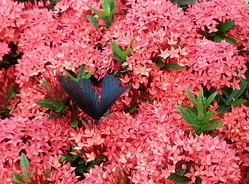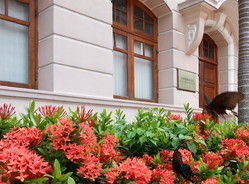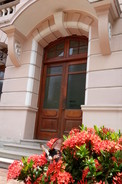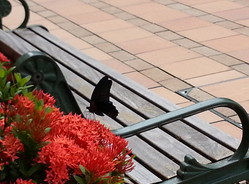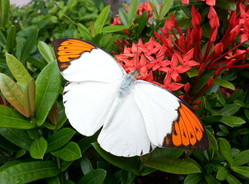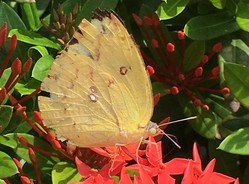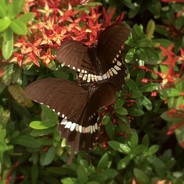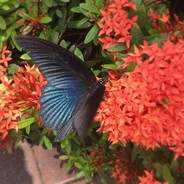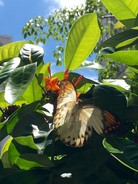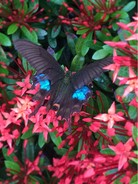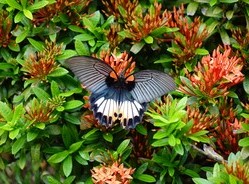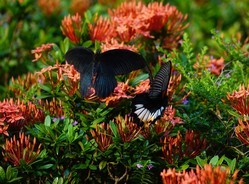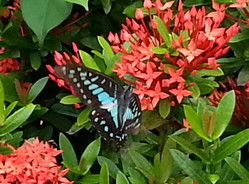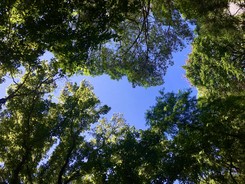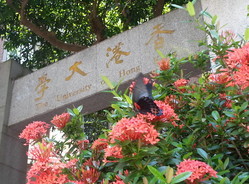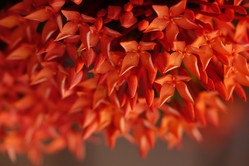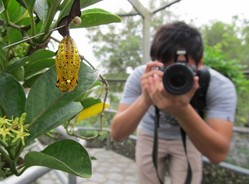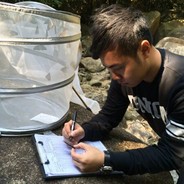
Communicate
Alumni Stories
Alumni Stories
Fly Me to HKU
Nelson So 蘇賜輝MSc(EnvMan) 2014
Groups of frequent visitors have been seen meandering around the HKU campus lately. Donning colourful garb, these guests move quietly around the campus, enjoying the tastes of summer. They are BUTTERFLIES!
Butterflies hold a particular fascination for Nelson So, who learnt about them when he joined the Fung Yuen Butterfly Reserve after his Bachelor studies. “Butterflies are most known for their colourful and diverse wing patterns, but what really surprised me was when I first learnt about the secret behind the colours.”
Nelson explained that some toxic butterfly species possess brilliant colours to warn predators about their toxicity, while some non-toxic species are smart enough to mimic those patterns in order to get the same protection. Some species have eyespot patterns to scare away predators, while others evolved camouflage colours to make them ‘invisible’ in the environment.
His enthusiasm was infectious and whenever he shared his butterfly knowledge with the public, their interest grew to the point that some became volunteers themselves at the Reserve and, like Nelson, now help to protect the butterflies’ habitats. This positive reaction gave him the motivation to participate in public education works.
Certain butterfly species migrate to warmer climes for winter and during his time at Fung Yuen Nelson was able to take part in a regional butterfly migration research project, which involved capturing individuals and marking them. Every time he comes across a marked butterfly, it feels to him as if he is meeting an old friend and he never fails to be amazed by the distances they have travelled.
The butterflies seen on the HKU campus are, as Nelson explains, attracted by the flowering plants found about the grounds. “The red flowers that butterflies like are called Ixora (龍船花). It is a common nectar plant in Hong Kong that attracts butterflies. Nectar plants (蜜源植物)are the food source for adult butterflies who sip the flowers’ nectar using their proboscis, a long flexible tube-like straw that is the tongue of butterflies,” said Nelson, who currently works at the Hong Kong Green Building Council.
Butterflies are most active in Hong Kong from March to November when temperature and humidity are higher. However, since Hong Kong is relatively warm all year round, different butterfly species will have different occurrence periods and thus different mating seasons. So, when there are lots of nectar plants on campus, together with other favourable weather conditions, more butterflies would be attracted here.
He also tells us to watch for butterflies flying in pairs. “It means that they are trying to mate. In the world of butterflies, the one being ‘chased’ is usually female, and it’s not rare to see few or more male butterflies chasing the same female, though only one male will eventually succeed.”
“In Hong Kong, there are about 250 butterfly species. But knowing about them doesn’t mean we are protecting them,” said Nelson. After the completion of his MSc Environmental Management programme in HKU at 2014, he has gained a wider exposure to various environmental issues in Hong Kong and their related policy concerns, and is committed to promoting environmental conservation and education to the public.
The red flowers that butterflies like are called Ixora (龍船花). It is a common nectar plant in Hong Kong that attracts butterflies.



